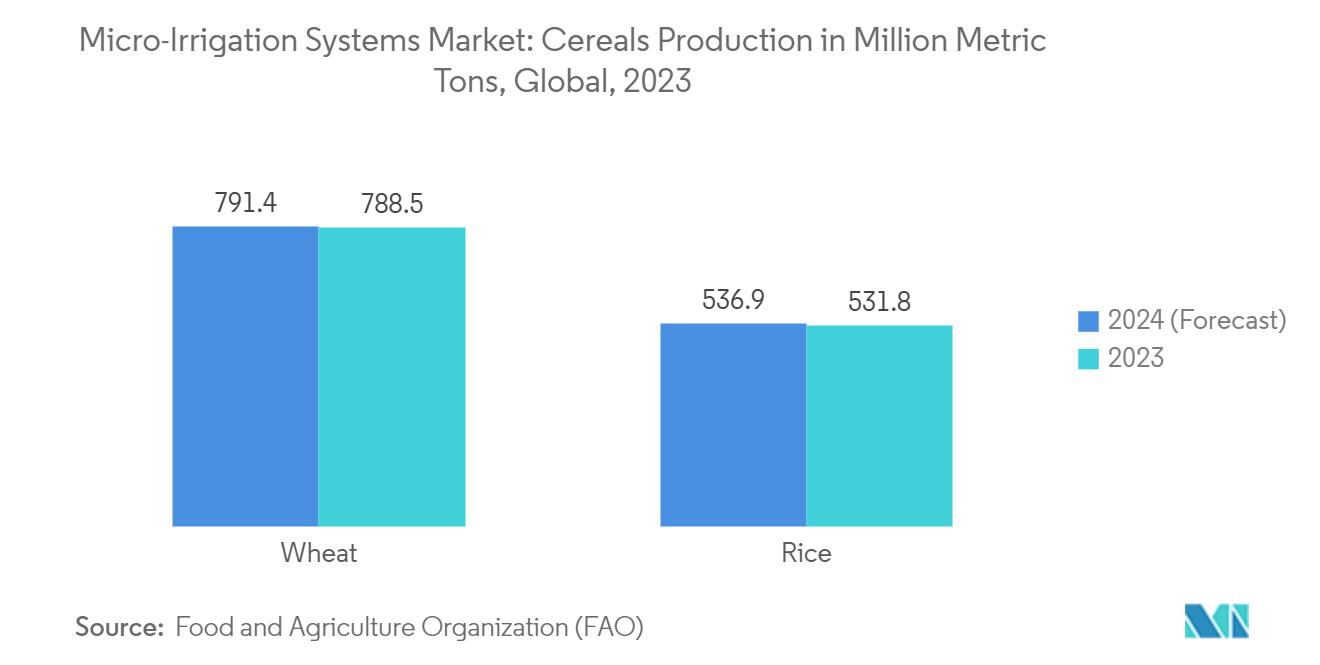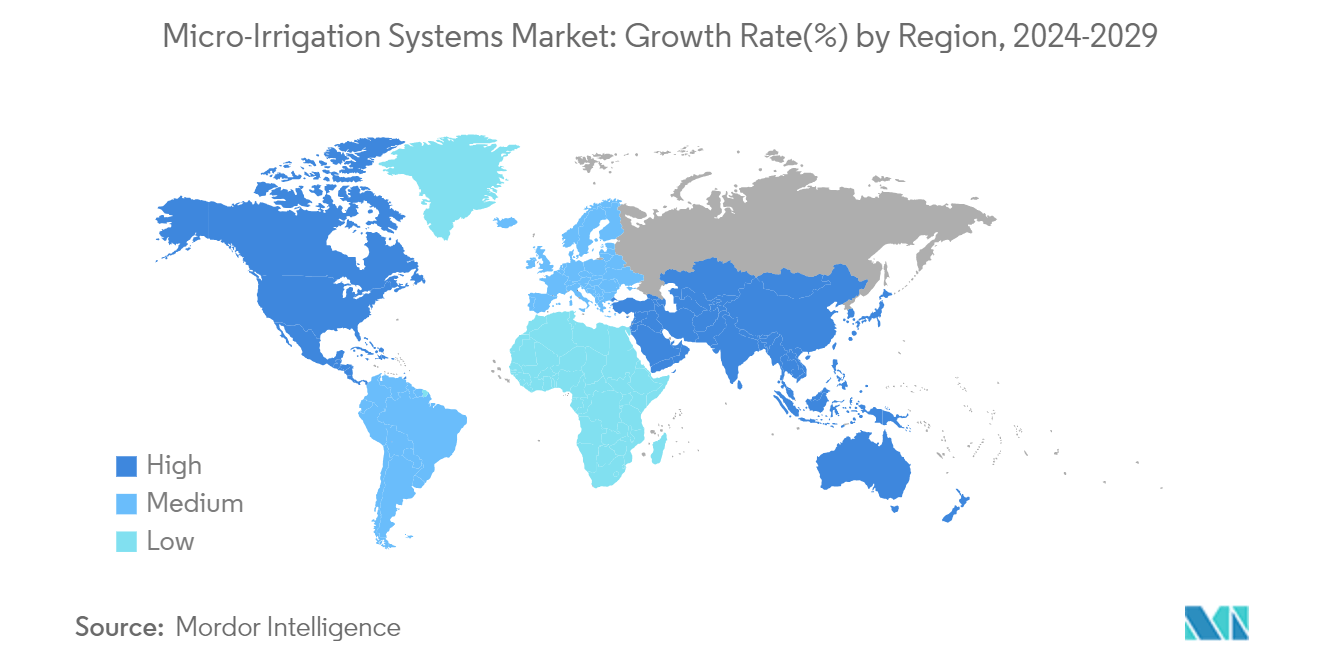Market Trends of Micro-Irrigation Systems Industry
Open Field Cultivation Leads the Market Segment
- Current food production methods heavily depend on resources like land, water, and detergents, sparking concerns about long-term sustainability. The United Nations (UN) forecasts the global population will near 9.6 billion by 2050. In 2023, global wheat and rice production reached 788.5 million metric tons and 538.1 million metric tons, respectively. Due to consumption and production trends, a threefold increase in food output is necessary to feed the world's population adequately.
- Agriculture consumes 70% of the world's water, with most crops grown in open fields where water use is prevalent. This is crucial, as water used in agriculture directly affects its availability for drinking and other essential needs. To address water overuse in agriculture, governments and international agencies are rigorously promoting the use of micro-irrigation systems.
- The crops commonly grown in these projects include maize, sorghum, soybean, sunflower, various grains, and legumes. Additionally, large quantities of fruits, vegetables, and plantation crops are being produced in open-field cultivation. The main irrigation systems used are pivot center systems, sprinkler irrigation systems, and drip irrigation.
- Effective water resource management is crucial for improving crop water productivity in semiarid countries like Egypt and other Eastern nations. In 2023, the Water Management Research Institute at the National Water Research Center (NWRC) in Egypt conducted a study on eggplant crops. The study focused on comparing the impact of surface and subsurface drip irrigation systems, soil characteristics, water productivity, and yield indices in open field settings. The research findings highlighted the effectiveness of open-field methods in conserving water and improving productivity and yield, particularly in clay soil conditions.

Asia-Pacific is the Fastest-growing Market
- Asia-Pacific leads the micro-irrigation market, driven by fragmented agricultural ownership, robust government initiatives aimed at water conservation for its dense population, and a heightened agricultural output.
- China, a major player in Asia-Pacific, is a global leader in manufacturing components for micro-irrigation systems. This influential position is primarily attributed to the government's dedication to modernizing agricultural practices. China's ambitious five-year plans aim for significant market expansion. By 2030, 75% of its irrigated areas will adopt water-saving micro-irrigation systems.
- Indian agriculture heavily relies on the monsoon, resulting in a lower percentage of irrigated farming than many developed nations. With the increasing use of micro-irrigation techniques and various irrigation initiatives, the amount of cultivated land benefiting from reliable irrigation has risen to 52%, which equals 73 million hectares in the 2022-23 period, according to a report by the National Institute for Transforming India (NITI) Aayog.
- Apart from China and India, countries such as Japan, Vietnam, the Philippines, Bangladesh, and Pakistan significantly impact the micro-irrigation market. The popularity of micro-irrigation systems in these nations can be attributed to endorsements from various organizations and strong government support. A key incentive for small-scale farmers across the region is the system's ability to reduce water consumption while simultaneously increasing production significantly.


